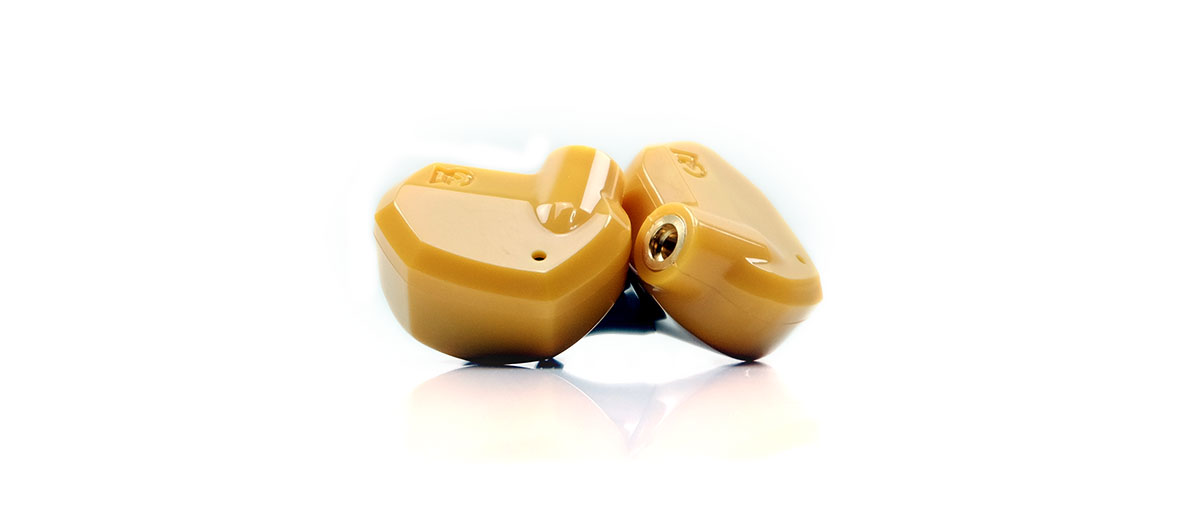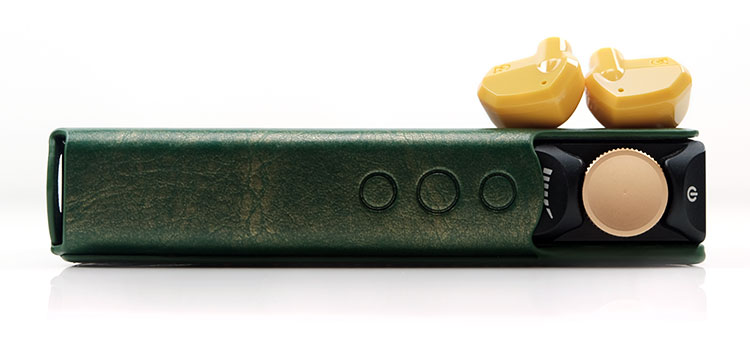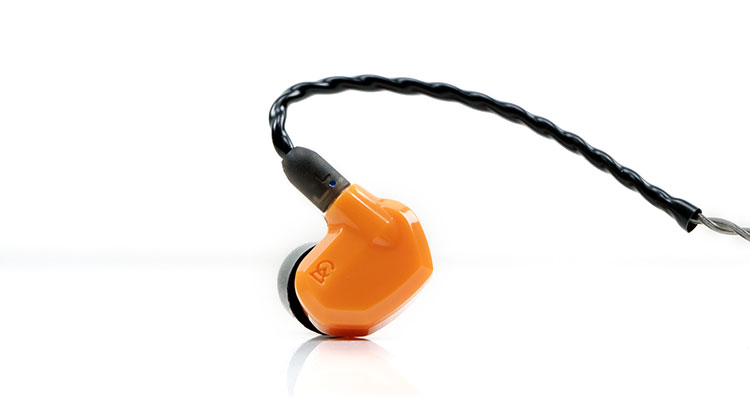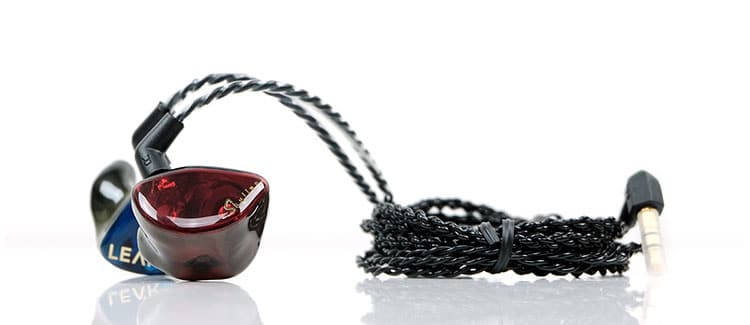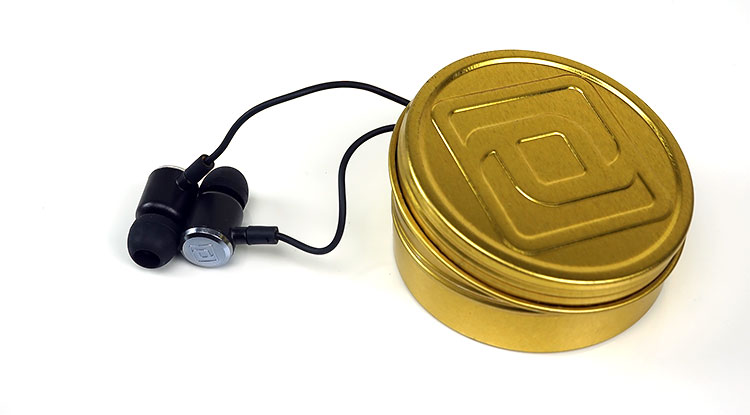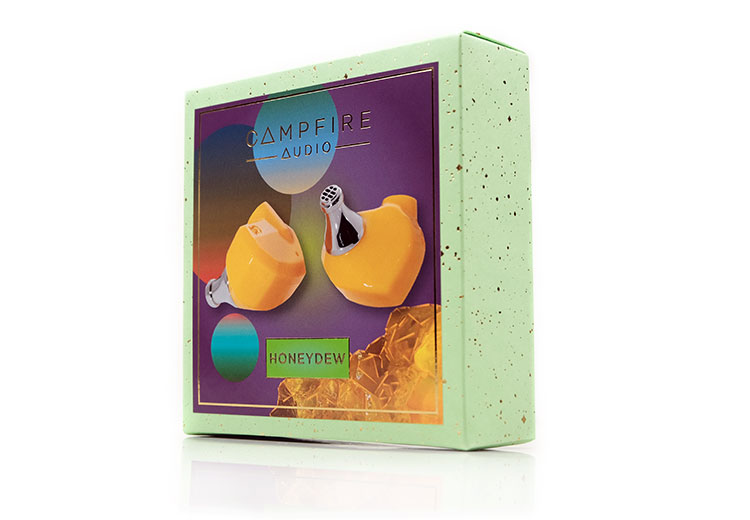Synergy
Efficiency
The Honeydew is rated at 17.44Ω and requires 17.68 mVrms to achieve 94dB SPL at 1kHz. Now CA has been using their new benchmarking system for a while now so whilst 17.44Ω is immediately recognizable as a daily light load, even by IEM standards, the mVrms rating does require a bit of comparison work to get a feel for how sensitive it is.
For a start, the new dynamic driver inside the Honeydew is not entirely inconsistent with the A.L.D.C driver efficiency inside the more expensive Vega 2020 listed at 19.86 mVrms. It is less efficient, however, compared to the likes of the Ara and the Andromeda BA configurations which are around 7-8mVrms.
The one thing that really did surprise me was the comparison with the new Satsuma single BA design which turned out to be far harder to drive at 46.4Ω and needing more current also at a whopping 67 mVrms.
The Honeydew isn’t going to have issues with background hiss from high noise floors and most DAPs will drive it just fine from their SE outputs. The key rather is synergy matching because of the IEM’s bassy and warm coloration. Some match well, some do not.
Pairings
Out of the three tested DAPs, it was pretty obvious that clean and expansive sound signatures fared better than bass-heavy or warmer sources.
For example, the iBasso DX160 sounded spot on with plenty of headroom, a bit more treble presence pushing forward, and above-average instrumental separation. Vocals had air to breathe and the bass response, though still weighty, did not suffer from excessive bloom.
On the flip side, I felt the Cayin N3 Pro and the HiBy R5 overemphasized the low-end and produced a signature with too much bass bloom and an overly rounded tone from the Honeydew. The air and instrumental separation were a bit lacking as a consequence with vocal suffering the most from this performance.
For dongle users, the Lotoo PAW S1 pairing can work but it requires a bit of tweaking to get it just right. Without EFX, vocals can sound a bit overpowered by the bass line on its SE output producing a very rounded timbre compared to the DX160 pairing.
You can improve things considerably by using the Paw S1 EFX Sweet or brighter mode and switching also to high gain to get reduce the bass weight and enhance the space and air in the mids of the Honeydew.
Select Comparisons
Campfire Audio Satsuma
$199
Technical
The Satsuma was launched at the same time as the Honeydew and in many ways shares a lot of the same design and material characteristics. That includes the 3D printed internal acoustic chamber, custom MMCX beryllium/copper connectors, and the new miniaturized stainless-steel spout.
However, internally the Satsuma has a very different implementation using a single full-range rear-ported balanced armature compared to the single 10mm LCP dynamic driver inside the Honeydew. It is also now the cheapest monitor in the CA lineup that uses their Tuned Acoustic Expansion Chamber™ or T.A.E.C. tubeless driver technology.
What is also striking, at least on paper, is the spec variation between these two. Normally I expect a DD to be more demanding and less sensitive than a BA but here the Satsuma is rated at a whopping 46.4Ω and requires a massive 67 mVrms to hit the benchmark 94dB SPL @ 1kHz. The Honeydew load is much lower at 17.4Ω with a lower 17.68 mVrms to hit the same 94dB.
In our real-world tests using an iBasso DX160 those numbers proved accurate with the Satsuma requiring a lot more current or volume, at least 10-15 steps more in a low-gain SE output setting.
Design
You shouldn’t be too surprised with the “orange fizz” color scheme with a monitor called Satsuma. Compared to the Honeydew it is a little darker, more saturated with orange but in all other areas, both IEMs are the same.
That included the miniaturized acrylic 3D printed outer shell with the angular aesthetic and soft-to-the-touch curving as well as the very lightweight feel to each driver. Both IEMs have the new scaled-down stainless-steel spout with the same tip selection and a Smoky Lite 1.32m Litz SPC cable as stock.
Given the same form factor and dimensions, the comfort levels in the ear are both very good indeed. I have zero complaints there with their excellent balance and secure fit. The Satsuma does isolate slightly better but no surprise there given it has no venting port like the Honeydew.
Performance
There are some very clear differences between these two monitors and that is not surprising given the difference in driver use. The Satsuma is lighter-bodied, clean in tone, and articulate whereas the Honeydew is weightier, warmer, and richer in texture but with more of a languid pace and longer decay.
Both have clear source preferences, at least for my tastes. The Honeydew does much better with a clean expansive sounding source such as the DX160 whereas the Satsuma felt more natural in tone with slightly warmer and beefier sources such as the original HiBy R5 and smoother tube ultra-linear setting of the Cayin N3 Pro.
The core traits of the two, (Honeydew followed by Satsuma), are power over delicacy and expansiveness compared to intimacy. If you are shooting for a ‘big sound, a planted performance with rich even harmonic texture then the Honeydew is going to give you a lot of that.
If you need something a bit more detail orientated, more intimate, and vocal orientated with extended highs then the Satsuma is the better choice. It pulls back on the overall warmth but importantly with smooth sounding sources it can retain a good natural tone, especially with brightly mixed vocals where natural sibilance can tip things over with a poor match.
Lear LCM-Skyline
Around $215
The LCM-Skyline was reviewed by us back in late 2019 and won our Bang for Buck Custom IEM award for 2019. It is actually cheaper than the universal Honeydew, even with varying exchange rates at around $215.
Technical
Inside, the Skyline also uses a single dynamic driver but it is slightly smaller than the Honeydew version at 8mm compared to 10mm and uses a PEEK diaphragm as opposed to LCP.
German-made PEEK diaphragms are used for their purported superior dynamics and detail to regular diaphragms. LCP pretty much has the same purpose with an equally rigid property and low distortion performance.
Both have their own airflow systems and objectives with venting. For the Honeydew the chamber is 3D printed in line with the venting port to maximize the driver performance whereas the Skyline uses a small mechanism inside which helps balance in-ear pressure and reduces potential long-term damage to your hearing.
On paper, the Skyline is rated at 16Ω impedance, which is lower than the 17.44Ω of the Honeydew. However, for SPL we cannot make a direct comparison due to the different benchmarks used. The Skyline is 109dB @1mW whereas the Honeydew uses CA’s 94dB @ 1kHz as their benchmark and how much mVrms it takes to get there. In this case, it’s 17.68mVrms.
In our real-world testing with the DX160, the Honeydew proved to be more current sensitive sitting at around 40-43 on the SE low gain setting whereas the Skyline pushed further up to around 48-50.
Design
The Skyline is a custom design and there are some particular advantages to going the custom route. Certainly, its design is more unique, the fit is perfect so long as the molds sent into Lear are good quality and the isolation is superior to the Honeydew.
On the opposing side, the Honeydew is much smaller and lighter. Despite giving up a lot in terms of fit, accuracy, and isolation it actually feels a little more comfortable in the ear compared to the Skyline.
Both use MMCX terminations but on the latest Lear Skyline models, you now have their patented Combo-Con system which allows you to change the MMCX socket when it wears out with a new one. The CA countertop that with the Honeydew is their long-life beryllium copper connectors which have a much longer snap-on and snap-off life compared to regular brass connectors.
Both use 4-wire SPC wire with right-angle 3.5mm TRS hacks for their cables though I don’t believe the Skyline is a Litz geometry. The Smoky Litz cable has a slight edge in terms of aesthetics and is lighter in weight with lower-profile barrels.
Performance
Both have an unmistakable dynamic driver timbre in their sound signatures, however, the Skyline tuning has some differences in where the emphasis is in the FR which, in turn, creates a slightly different tonality.
Two of the key differences lie in their respective sub-bass weight and how much further forward the Skyline is from 1-4k. The Skyline is much more controlled for sub-bass weight, it biases slightly more to mid-bass warmth with a very gentle roll-off from 50Hz down to 20Hz. The Honeydew is all about the sub-bass with its peak amplitude from 20Hz up to 50Hz.
That means both generate some nice warmth and body but the Honeydew has the stronger sub-bass response, more power also and thus more dominant in the tuning.
The second key area is the midrange with the Honeydew slow diving through the mid-bass, upper-bass into a 1-3k dip. The Skyline dips a lot earlier from 500Hz to 1K and then rises from 1-4k.
You get a slightly thinner lower-mids instrumental timbre on the Skyline and a more forward vocal presence whereas the Honeydew sounding more forward and fuller in the lower-mids but less forward for male vocals and some female. Once you hit 3-4k onwards the Honeydew does pick up a bit more presence and clarity.
The Skyline’s 1-4k peak only has a tiny nudge around 8-10k so midrange vocals can stand out but the high-frequency presence is otherwise generally laid back. The Honeydew has a bit more treble energy, following a more classic V-shape but it’s not overly pervasive either and of the two has a slightly sweeter and smoother vocal timbre.
Periodic Audio Titanium
$199
We reviewed the Titanium or Ti model as part of a trilogy of Periodic Audio IEMs back in late 2017. I call them the “No BS” IEMs because of the simplicity of their presentation and packaging but it is priced close to the Honeydew at $199.
Technical
Inside, the Titanium uses a 10mm dynamic driver, the same size as the Honeydew but differs with a pure titanium foil coated diaphragm as opposed to LCP. The goal with both diaphragm coatings is much the same here in terms of strength and stability but I do always find titanium drivers to offer a slightly cooler timbre.
Aside from that, there is very little mention of any specific acoustic chamber design inside the Ti aside from the use of N48H grade magnets. However, being a dynamic driver monitor the Ti is also vented much like the Honeydew.
In terms of specifications, the Ti is the less efficient of the two IEMs rated at 32Ω compared to the Honeydew’s 17.44Ω and just 96dB SPL. Although the 17.68mVrms at 94dB SPL @ 1kHz is not a direct comparison to the 96dB of the Ti, our DX160 tests did show the Ti as the less sensitive of the two monitors.
On the DX160 SE Low gain, the Ti sat comfortably at 50 clicks whereas to achieve roughly the same listening level the Honeydew only needed around 42-43 clicks.
Design
Very different approach to designs here with the Ti using a classic bullet shape form factor compared to the more svelte and modern 3D printed build of the Honeydew.
Instead of 3D printed resin, the Ti uses a polycarbonate body, metal-injected-molded grade 304 stainless-steel logo caps, butyl rubber strain reliefs, and chemically etched grade 316 stainless-steel grilles. Of the two, the Ti is the heavier and taller monitor.
The Honeydew is a lighter and more ergonomically shaped design with an acrylic shell, a stainless-steel spout, and beryllium/copper MMCX connectors. You may have noticed in the picture, the Ti does not use a detachable cable system, and even though it seems a very durable 4-core 3.5mm TRS wire that lack of flexibility is its biggest weakness.
In terms of comfort and isolation, bullet-type designs always work well since they barely touch the ear. Most of the seal is tip generated but they isolate a little less than the Honeydew.
You do have the option to wear the Ti straight down or over the ear and I do recommend over the ear as microphonics are higher than the Honeydew straight down and they feel less secure. With the over-the ear-style, you get next to no microphonics below the splitter on the Ti, same as the Honeydew, and a secure fit.
Performance
If you think the Honeydew is V-shaped then you need to hear the Periodic Audio Titanium for how a purist V-shape is done. The Ti is all about high contrast with plenty of sub-bass and lower-to-mid treble as well as a very chilled and dipped mids in between.
The Honeydew injects a bit more mid-bass and upper-bass presence and with that, it brings a lot more warmth into its mids timbre. The treble is also a bit smoother on the Honeydew and not as strident and peaky as the Ti.
Vocals are very dipped on the Ti. You do get more presence and clarity the higher the vocal pitch but the higher you go the brighter and harder sounding the Ti timbre gets. Whilst the Honeydew vocals are not the most forward either they do have a much better presence and a much smoother more natural sounding timbre.
In terms of staging, with that dip in the Ti, it is going to sound fairly expansive with some amplitude at both ends of the FR spectrum. For vocals and midrange imaging, it’s quite hollow sounding and not an IEM I recommend for vocal enthusiasts. This is more of a Classical Music or arena orchestra type of IEM.
The Honeydew is big on power and depth but brings the upper-bass and lower-mids a bit further in and pushes up the vocal performances a bit better. I actually think it extends better into the highs or upper-treble than the Ti for headroom, just the presence is not excessive.
Our Verdict
The Honeydew is a fun little offering that, whilst clearly colored for enjoyment over technical prowess, can still offer a more refined tuning compared to some of the competition out there.
I believe the key trait here is not just about the obvious power of the bass but how well the treble interacts with it. This is a subtle treble performance that gives the higher pitching timbre a slight sweetness to it rather than a metallic or harsh tone which can often be the case with classic V-Shaped IEMs.
Synergy is oh so important here. Aim for neutral and airy from your source. I sound like a broken record but the DX160 really paired marvelously with the Honeydew and a bag of synthwave tracks. That seems to be its forte, a zone of comfort, and its best performance setup for me personally.
Overall, the Honeydew is all about big fun-sounding casual listening with a tonal coloration that makes it non-fatiguing. It is nothing like the Satsuma so there should be no confusion on which one is the right one for you out of CA’s recent summer entry-level IEM releases.
Campfire Audio Honeydew Specifications
- 5Hz–18 kHz Frequency Response
- 94 dB SPL @ 1kHz: 17.68 mVrms
- 17.44 Ohms @ 1kHz Impedance
- Mellow Yellow ABS Body
- Single Custom Full Range 10mm Dynamic Driver
- Bio-Cellulose Diaphragm
- Custom Beryllium / Copper MMCX Connections
- Stainless-Steel Spout

